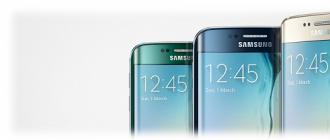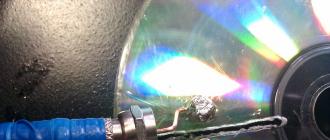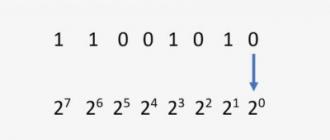How to properly and safely charge an iPhone after purchase? Try different chargers.
Hi all! It would seem that the answer to this question is quite simple and you need to charge the iPhone exactly so much time until the charge is full and its indicator continues to light up next to the battery icon. As soon as the battery indicator turns green and is completely full, that’s it, you can safely turn off the charger. Logical? Of course!
However, there is another side to the issue. For example, some users want to know the exact number of hours and minutes that an iPhone should be charged. And they have the right to do so - such data is never superfluous. Also, I am especially often asked about how long a new, just purchased iPhone should be recharged.
In general, I can only explain all this fuss about “charging time” by the fact that there is still some kind of magic hovering around the iPhone. Beginners are afraid of doing something wrong and damaging the device in some way, even when it comes to something as simple as recharging. Looking ahead, I can note that this is practically impossible. But first things first, let's get started!
The first thing you need to pay attention to is that charging times, even for two identical iPhones, will never be 100% the same. The rate at which energy is filled depends on many factors, and here are some of them:
- How full the battery is initially.
- Is the original wire (power supply) used?
- Where does the power come from (computer or outlet).
- Adapter power. For example, Apple officially charges the iPhone. And of course, in this case everything will go much faster.
- Is the smartphone in airplane mode, connected to Wi-Fi or cellular networks, etc.
And this is not all the moments! So if your friend’s phone charges in 2 hours, and yours in 2 hours 30 minutes, then this in no way means that you have a defect, and you should run to change it.
However, there are some average times iPhone charging:
| Average charging time | ||
| Adapter included | Power 5 Watt, current 1 Ampere | Power 18 Watt |
| iPhone 4, 4S, 5 | 1 hour 40 minutes | |
| iPhone 5S, 5C | 1 hour 50 minutes | |
| iPhone 5SE, 6, 6S | 2 hours 10 minutes | |
| iPhone 6 Plus, 6S Plus | 3 hours 30 minutes | |
| iPhone 7 | 2 hours 20 minutes | |
| iPhone 7 Plus | 3 hours 40 minutes | |
| iPhone 8 | 2 hours 10 minutes | |
| iPhone 8 Plus | 3 hours 30 minutes | |
| iPhone X | 3 hours 30 minutes | |
| iPhone XS | 3 hours 20 minutes | |
| iPhone XS Max | 3 hours 50 minutes | |
| iPhone XR | 3 hours 40 minutes | |
| iPhone 11 | 3 hours 50 minutes | |
| iPhone 11 Pro | 1 hour 45 minutes | |
| iPhone 11 Pro Max | 2 hours | |
A few important notes about this table:
- This refers to how long it takes to charge from 0 to 100%.
- Some models were combined into one line due to the fact that their battery capacity differs only slightly, and it makes no sense to check the time with an accuracy of minutes.
- The data is indicated when using a standard (included) power supply.
- All figures are approximate, just for reference. You may have more or less.
Useful feature! Useful for those who want to charge faster - use airplane mode. In places with an uncertain signal cellular network such an operation will help speed up the process by 20-30%.
It is also important to remember these things:
- Up to 80% of the iPhone is so-called fast charging, the next 20% is much slower.
- How long does it take to charge new and newly purchased iPhones? The same amount as those already used. Without any frills or distortions (like fully charging three times, then completely discharging, etc.). Modern batteries do not require such calibrations.
- Upon reaching full charge no need to run and rush to turn it off. Nothing bad will happen - special controllers are built into the iPhone itself, the power supply and even the cable, which will prevent the smartphone from being “oversaturated” with energy and thus deteriorating.
- iPhone can be charged many times. Not even that. A lot of times! Why? Read personal experience about how I am, after 2.5 years of use, and what happened to it.
Conclusion: charge your iPhone as much as it (and most importantly, you!) needs. Don't chase exact indicators and don't complicate your life.
P.S. I forgot to say that every “+1” to the article is +10% to the health of the battery. Such a bonus will definitely not be superfluous, right? Don't be shy and "like"! :)
P.S.S. Do you have any questions or questions? Feel free to ask them in the comments - we’ll try to solve your problem together!
Users of even the most modern gadgets sometimes blindly follow a rule that was widespread at the dawn of mobile communications: Before using, the device must be completely discharged, then fully charged.. The most fanatical users have developed this rule to the point of absurdity, proposing to fully charge and discharge the iPhone three times. Whether this makes any sense at all – we’ll look at it in the article.
Practical research on the issue of charging mobile devices someone was doing Eric Leamer - his experiments led him to unexpected conclusions. It turns out that charging your iPhone to 100% is not possible at all. harmful– the optimal charge level should be from 50% to 70%. When charged to 100%, the battery can withstand only 500 cycles, while when charged to 70% - over a thousand.
Where did the prejudice about the importance of a full charge come from? First Cell Phones were equipped with nickel batteries susceptible to so-called memory effect. Memory effect is that if the operating instructions are violated, the active substance of the nickel battery crystallizes - as a result, the maximum amount of energy that the battery can store decreases. The battery “remembers” that it was not fully used before, and therefore releases energy only up to a fixed limit - hence the name of the effect.
Modern gadgets are equipped with lithium-ion batteries, which There is no memory effect. Almost everyone who talks about the need before use completely discharge the phone, belong to the older generation and started with black and white “dialers”, for which this rule was relevant. Nowadays, a buyer will not hear such a recommendation from a competent consultant in a salon.
How long does it take to charge an iPhone?
iPhone charging time depends on a number of conditions:
Battery capacity. The latest modifications 6 and 6S have larger batteries, so they take longer to recharge.
- power unit. There is one secret: If you use the iPad's power supply, charging time will be reduced to a minimum. There is no need to fear that this method will negatively affect the battery: by Apple this is not forbidden.
- Parallel use. If the owner of the gadget is using the gadget while charging (for example, playing), more time will, of course, be needed.
A “healthy” battery does not need more than 3 hours to charge from 0 to 100%.
If the iPhone does not have enough nights to fully recharge, it is better to contact a service or sales office under warranty.
Don't let your gadget overheat. Pay attention to this scale, which is posted on the official Apple website:
The ideal temperature for operating the iPhone is from 16 to 22 degrees. Using it at a different temperature will not degrade the quality of the battery, however, the device itself will hold a charge for less time.
Recharging is a different matter: if it is carried out in conditions of high temperatures, devastating consequences for the battery cannot be avoided. Statistics say: constant recharging at a temperature 10 degrees above normal leads to the fact that the battery drains by 20% in a year - within three years your iPhone will need expensive repairs.
Therefore, under no circumstances leave your smartphone “charged” on a windowsill or in a car, do not cover it with a pillow and blanket, or remove the case from it while it is charging!
Use only certified accessories. Please note that we are not talking about original, but about certified USB cables and power supplies. The latter can be produced not only by Apple, but also by another company, which means they have a lower price. You can determine which accessory is certified by the “Made For iPhone” inscription on the packaging.
Certified accessories (like the iPhone itself) have special PMIC controllers that “monitor” that the current, voltage, and temperature do not exceed acceptable limits. If, for example, the iPhone overheats, charging will stop and a message like this will appear on the screen:

There are no controllers on Chinese “no-name” accessories, so the user uses them at his own peril and risk. Note the statistics: increasing the charging voltage by just 4% above normal will cause the gadget’s battery to wear out twice as fast.
Fully discharge your iPhone, but don't do it more than once a month. A monthly full discharge is needed to calibrate the power controllers. Many Apple users notice that their devices turn off when the charge is 2-3% - this is a sign of uncalibrated controllers. However, it is impossible to constantly “wear out” the iPhone to zero - this is extremely detrimental to the battery. Try not to force your gadget to turn off more than once a month.
Conclusion
Sooner or later you will have to spend money on a replacement iPhone batteries you have to - that's a given. Regarding the timing, the opinions of many experts and the author of the article differ: you can often find recommendations to change the battery every 2 years of intensive use of the gadget, however, iPhone battery The author is constantly in business and has not caused any complaints for 3 years now. It is important to monitor the quality of accessories and recharging conditions and then you will not have to enrich the service center technicians.
The new iPhone 7 should last longer without recharging, according to the manufacturer itself. In addition, the battery now charges faster. In this case, certain problems with charging may arise under the influence of negative environmental factors. Next, let's take a closer look at why the iPhone 7 is charging slowly?
— First of all, there may be problems with the battery. This may be due to damage or the end of its operational life. An old battery charges more slowly. In this case, you can simply change the battery to a new version that will allow the phone to work longer without recharging.
— Problems may also arise with the charger. For example, it could be a damaged cable, which prevents you from quickly charging your iPhone 7. To avoid such problems, you need to use only original chargers.
— Software failure. This happens quite often when several programs are open on the phone at the same time. You just need to try restarting your phone or resetting the settings.
— If you cannot solve the problem, you can always contact the service center.
Correctly charging the new iPhone 7.
You need to learn how to charge your iPhone correctly first. First of all, this will allow you to use your phone for more time without recharging. Proper charging will also extend the battery life.
Also on topic: What are bearings and their main types.
— New iPhone Be sure to charge the first time to 100%
- After this, you can safely use all the capabilities of the phone.
Is it possible to leave iPhone 7 charging all night?
You need to find out a little more about how the charging process works on an iPhone. A special controller located on the main board is responsible for this function. Wherein operating system controls the controller, which in turn allows you to charge the phone battery.
The controller tries to quickly charge the battery while preventing it from overcharging. The first 80% charges very quickly. Eventually this process slows down.
After the battery is fully charged, the controller turns off power to the device. In other words, the phone stops charging. At the same time, the iPhone 7 continues to be powered from the mains if the charger is turned on. In other words, the battery is not discharged or charged. This is only a plus, both for the battery and for the user.
Is your iPhone charging slowly (long, poorly) and you don’t know why? The reason for this could be problems with the charging port, cable, charger or software - just 4 components involved in the charging process. In this article, I will explain possible reasons slow (long) charging of your iPhone and tell you how to solve this problem!
Most often, the iPhone charges slowly (long, poorly) for one of these reasons:
1. Using a charger with low power. Think of a fire hose. If voltage is the speed of water supply, then current is the width of the hose, or how much water the hose passes per unit of time. The iPhone's voltage is constant - 5 volts, but the current varies depending on the charger - usually it ranges from 500 mA (milliamps) to 2.1 amps, which equals 2100 milliamps. The higher this indicator is on the charger, the faster your iPhone will charge.
2. There might be some debris stuck in the charging port of your phone. The charging cable has 8 pins, and if any of them are dirty, the charging process will slow down significantly or stop altogether.
Warning about the dangers of "fast" chargers with too high amperage
Apple products charge at a current of 2.1 amperes and this is the maximum possible charging power for equipment of this brand. Many are fast charging device have more power than 2.1 amps, so use them for Apple devices unsafe. The phone battery may be damaged.

Why does the iPhone charge slowly (poorly and for a long time) in the car?
Let's look separately at why your iPhone charges slowly (long, poorly) in a car (perhaps this is the reason why you were looking for this article). As already discussed, the docking station or cigarette lighter adapter often has insufficient amperage. And the lower this value, the slower the device charges.
If you want to increase the charging speed of your iPhone in your car, check your charger. Your phone will charge faster if you connect it to a more powerful car dock.

Clean your iPhone's charging port with an antistatic brush
First, try to clear any debris or dirt from your iPhone's charging port. We recommend using an antistatic brush, which can be purchased from specialty stores. Apple products. If you do not have such an antistatic brush, then use a cotton swab or toothbrush.
Use a brush to clean the charging connector, inside and out, to remove any lint, dirt, crumbs, or dust. You'd be surprised how much trash there can be!
After cleaning the charging port, try charging your iPhone again. Is it charging normally? If not, try cleaning the connector again; sometimes the dirt eats in so deeply that you can’t get it out the first time. If it doesn’t help again, and the iPhone still charges poorly and slowly, then read on!

Check the functionality of your iPhone charging cable
Next important part charging process is the cable. If it is damaged or frayed in any place, then this may be the reason for your iPhone's slow charging.
Carefully inspect the wire for damage. In the picture below you will see what a frayed cable looks like.

If you think your cable is bad, then try charging your iPhone using any other cable. If you think you need to replace the cord, we highly recommend one of our MFi cables designed specifically for Apple products.
Try different chargers
Not all chargers are the same! Charging your phone with insufficient amperage is the cause of slow battery life.
If you don't know how much power your charge source has, try connecting your iPhone to different sources. If you usually charge your device through your laptop using a USB cable, try plugging your iPhone into a wall outlet (or vice versa). Why, what to do? (Air, mini, Pro)
Recover iPhone using DFU mode, last possible method
Many people overlook the software component of the device charging process. Each time the power cord is inserted into the device, the software, which is responsible for charging. This means that if the program does not work correctly, then the iPhone may charge poorly and slowly, even without problems with the connector, cord or power source.


If your iPhone is still under warranty, contact the place of purchase and consult with the seller to resolve the issue.
The device began to charge faster!
And now your phone is charging normally again and you don’t have to wait all day for the batteries to become full. Now that you have learned the reasons for slow (bad, long) iPhone charging, we hope that you will share this article with your loved ones who may also need this information! If you have any questions, please ask them in the comments section below.






